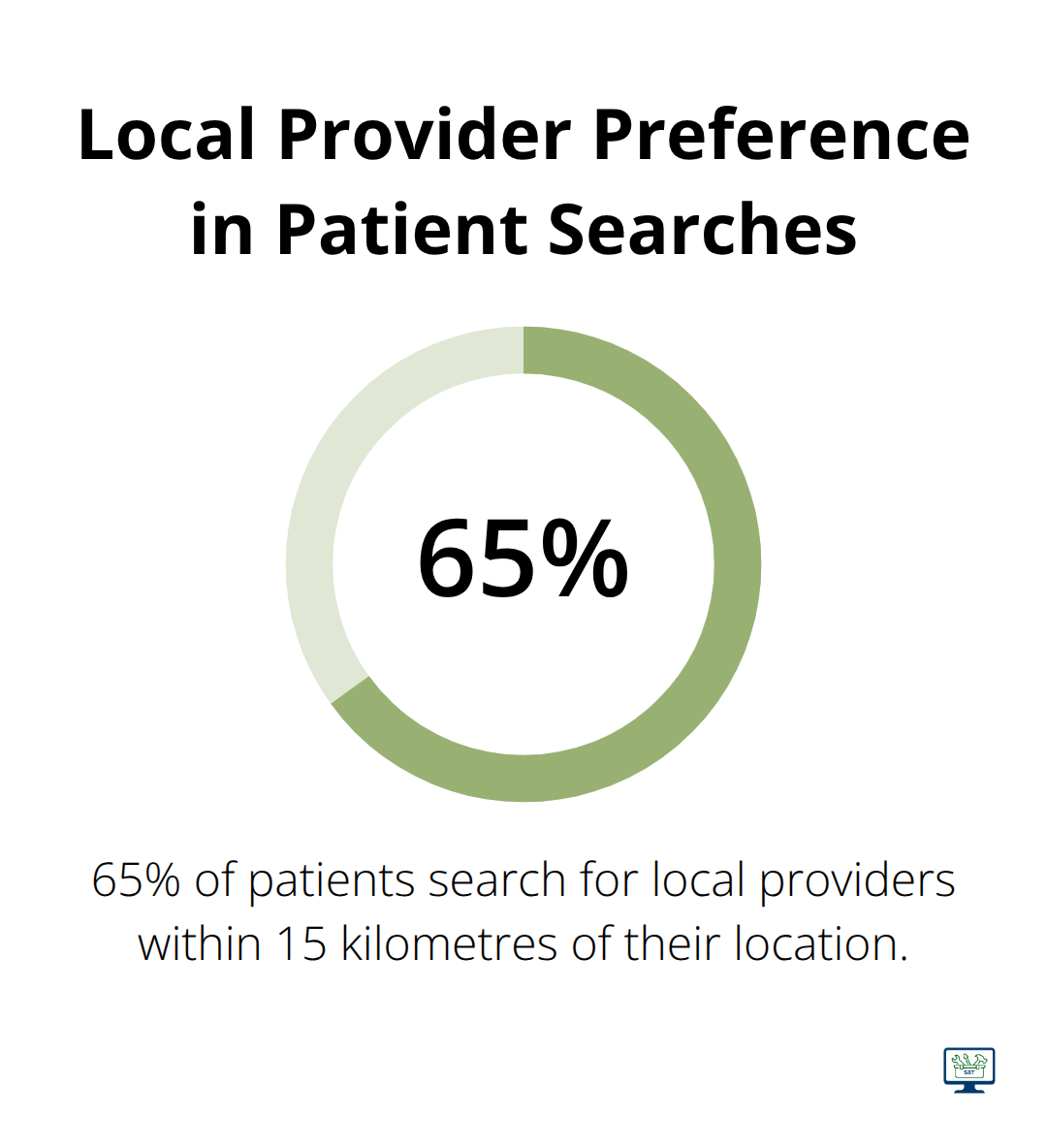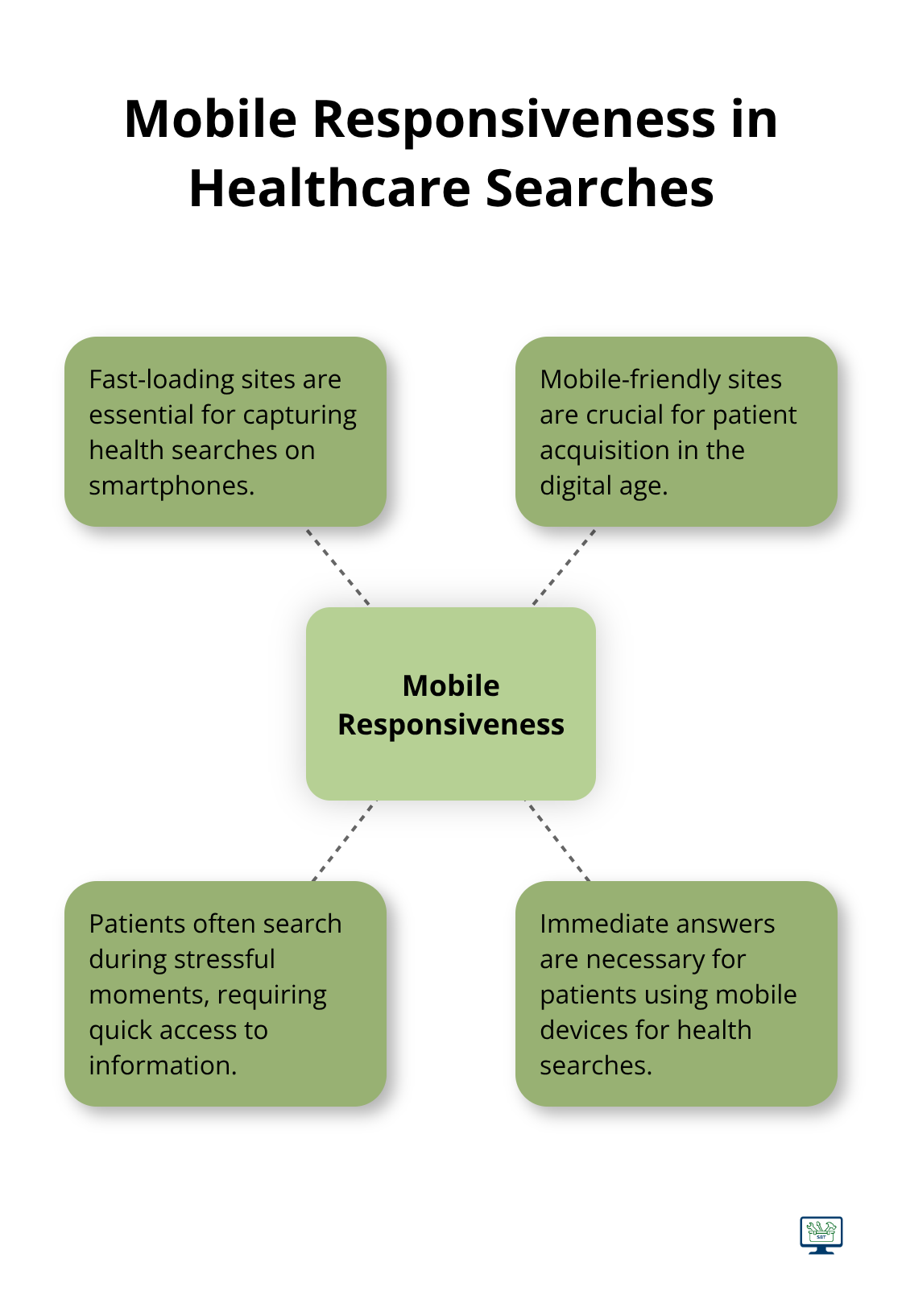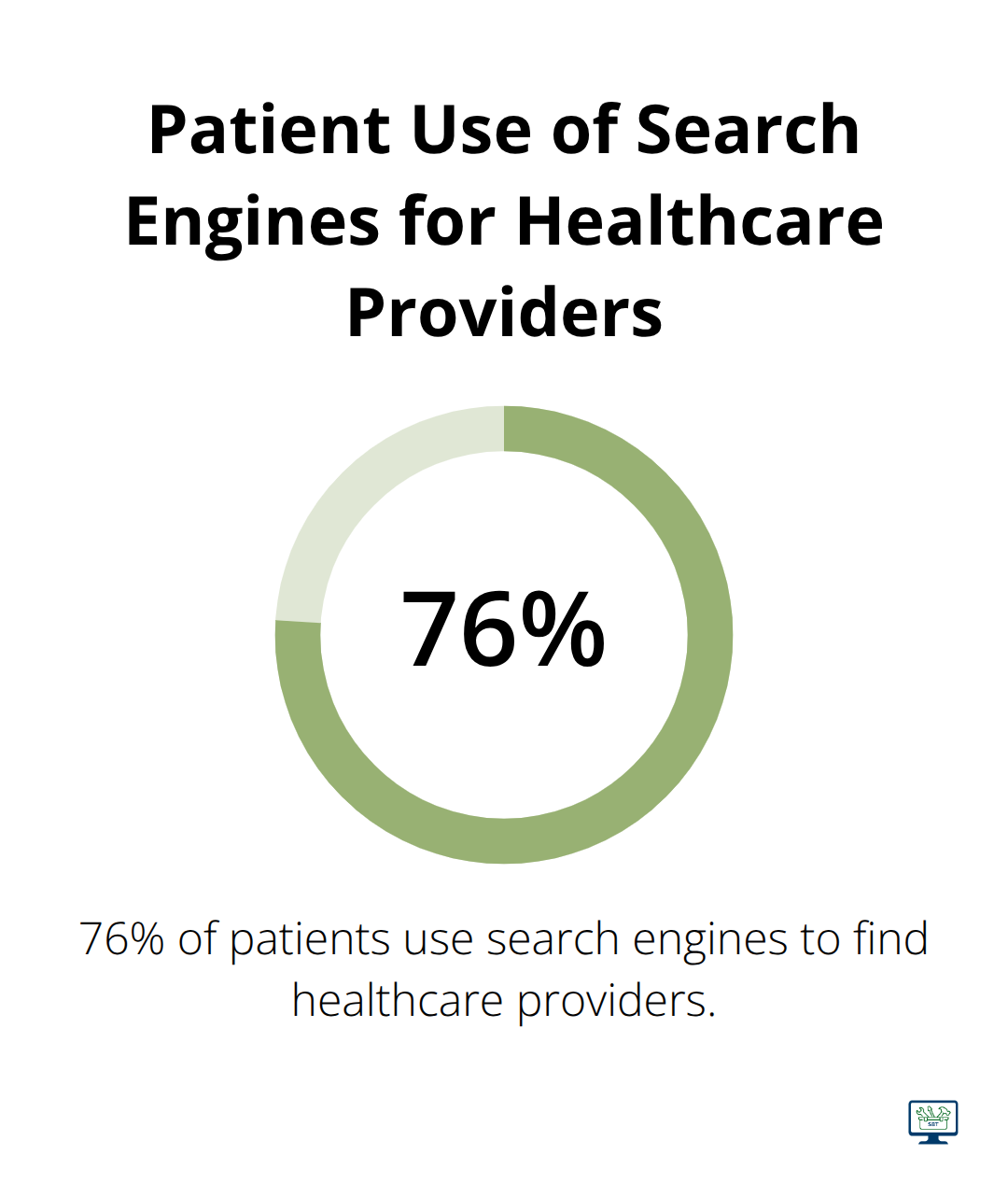How to Boost Your Medical Practice with SEO Marketing

Published On Oct 01,2025
Medical practices across Australia are losing potential patients every day because their websites don’t appear in search results. When someone searches for “GP near me” or “dermatologist Sydney,” your practice should be the first result they see.
We at WebsiteStrategies have helped hundreds of medical practices transform their online presence through strategic medical SEO marketing. The right approach can double your patient bookings within six months.
What Makes Medical SEO Different from Regular SEO
Medical SEO operates under stricter rules than typical business marketing because patient health decisions carry life-changing consequences. Google applies its E-A-T framework more rigorously to healthcare websites, demanding exceptional expertise, authoritativeness, and trustworthiness from medical content.
Your practice must display medical credentials prominently, publish accurate health information, and maintain spotless online reviews to rank well. AHPRA compliance requirements prevent you from using patient testimonials or making unsubstantiated treatment claims that work perfectly for other industries.
Patient Search Patterns Drive Medical Marketing
Australian patients follow predictable search patterns that smart practices can exploit. Research shows patients search for healthcare information before they book appointments, with 65% specifically looking for local providers within 15 kilometres of their location.

Morning searches between 8-10 AM peak for urgent care needs, while evening searches focus on specialist appointments and procedure research. Patients use different keywords at various stages: emergency symptoms trigger immediate searches like “chest pain doctor near me,” whilst planned procedures generate research queries like “rhinoplasty recovery time Melbourne.”
Local SEO Dominates Medical Practice Success
Local search results determine 80% of medical practice success online because patients rarely travel far for routine healthcare. Google My Business profiles significantly influence local healthcare decisions, making profile optimisation more valuable than traditional website SEO for most practices.
Patients search using location-specific terms 90% of the time, combining medical needs with suburbs, cities, or landmark references. Your practice must claim and optimise every local directory listing, maintain consistent NAP information across platforms, and actively collect patient reviews to dominate local search results.
Technical Requirements Shape Medical Websites
Medical websites face unique technical challenges that general businesses never encounter. Page load speeds must exceed standard benchmarks because health searches often involve urgent situations where every second matters. Mobile optimisation becomes critical since 60% of medical searches happen on smartphones, often during stressful moments when patients need immediate answers.
Your website structure must accommodate complex medical information whilst remaining accessible to patients with varying health literacy levels. These technical foundations directly impact how search engines evaluate and rank your medical content against competitors.
Key SEO Strategies for Medical Practices
Medical practices need systematic approaches that address three fundamental areas: website architecture, content strategy, and reputation management. Success depends on how well you execute each component to attract and convert patients searching for healthcare services.
Optimising Your Medical Website Structure
Your website structure forms the foundation where patients either find what they need quickly or abandon their search entirely. Medical websites must organise information hierarchically, with emergency contact details and appointment booking visible on every page.
Navigation menus should group services logically – general practice, specialists, diagnostic services – with clear pathways to location and contact information. Site speed becomes critical since healthcare sites must load critical content in under 3 seconds-especially on mobile networks.
Mobile responsiveness determines whether your practice captures the significant portion of health searches that happen on smartphones. Patients often search during stressful moments when they need immediate answers, making fast-loading, mobile-friendly sites essential for patient acquisition.

Creating Patient-Focused Content Marketing
Content marketing for medical practices requires precision that general businesses never face. Patients search for specific symptoms, treatments, and procedures using medical terminology mixed with everyday language (often combining both “hip replacement” and “new hip surgery” in their searches).
Your practice must create content that addresses both patient education needs and search engine requirements while maintaining AHPRA compliance. Blog posts that explain common conditions, treatment options, and recovery processes attract patients who research their healthcare decisions before booking appointments.
Each piece of content should target specific keyword phrases patients actually use – “hip replacement recovery Melbourne” rather than “orthopaedic surgical rehabilitation” – and provide genuinely helpful information that builds trust before appointment booking.
Managing Online Reviews and Reputation
Online reputation management directly impacts search rankings since Google considers review volume, recency, and response rates when determining local search positions. Medical practices can significantly improve their search rankings by maintaining high star ratings with consistent monthly reviews.
Active review collection and professional responses to all feedback become essential components of medical SEO success. Patients read reviews before choosing healthcare providers, making your online reputation a direct factor in appointment bookings and practice growth.
These foundational strategies work together to build search visibility, but many medical practices sabotage their efforts through common mistakes that prevent patients from finding their services online.
What SEO Mistakes Kill Medical Practice Growth
Medical practices sabotage their patient acquisition through three devastating mistakes that push potential patients straight to competitors. These errors cost Australian practices thousands of patients annually because they violate fundamental patient search behaviours and Google ranking factors.
Mobile Disasters Drive Patients Away
Medical practices lose potential patients when their websites fail mobile optimisation tests, yet most practices ignore mobile performance completely. Mobile users abandon sites that take longer than three seconds to load, which makes your desktop-optimised website useless during health emergencies.
Google penalises mobile-unfriendly medical sites more severely than other industries because health searches often involve urgent situations. Your practice must achieve mobile page speeds under 2 seconds and make appointment booking forms work seamlessly on smartphones.
Text must remain readable without zoom features, contact buttons must accommodate thumb navigation, and emergency information must appear immediately when patients land on your mobile site. These technical requirements determine whether patients can access your services during critical moments.
Google My Business Neglect Destroyers Local Rankings
Unclaimed or poorly maintained Google My Business profiles kill local search visibility faster than any other SEO mistake. Local SEO drives 28% of clicks for “hospital near me” searches, making this a critical component for practice visibility.
Patients book appointments directly through Google search results, which makes GMB optimisation more valuable than website traffic for most practices. Your practice must upload fresh photos monthly, respond to every review within 24 hours, and maintain accurate opening hours (including holiday schedules).
Post weekly updates about services, health tips, or practice news to signal activity to Google algorithms. Missing or incorrect phone numbers, addresses, or business hours trigger Google penalties that can drop your practice from local search results entirely.
Medical Jargon Blocks Patient Connections
Medical practices that use clinical terminology instead of patient language become invisible to health searches. Research shows that 76% of patients use search engines to find healthcare providers, yet most medical websites optimise for technical terms that patients never use.

This language mismatch prevents your expertise from reaching patients who need your services most. Your content must target patient search terms like “dermatologist for skin problems” rather than “dermatological pathology consultation.”
Replace medical acronyms with full terms patients understand, explain procedures with everyday language, and structure content around patient concerns rather than medical classifications. This approach connects your medical expertise with actual patient search behaviour.
Final Thoughts
Medical practices track their SEO success through specific metrics that reveal campaign effectiveness. Patient inquiry volume, appointment bookings from organic search, and local search ranking positions provide clear indicators of progress. Most practices see measurable improvements within three to six months, with significant patient growth occurring by month twelve.
Strong search rankings create compound growth effects where improved visibility leads to more reviews, which further boost local search performance. Practices that invest in comprehensive medical SEO marketing build sustainable patient acquisition systems that reduce dependence on expensive advertising. The long-term benefits extend far beyond increased website traffic (creating lasting competitive advantages that continue generating new patients for years).
Implementation success depends on systematic execution rather than sporadic efforts. Start with your Google My Business profile optimisation, then focus on mobile website performance before expanding into content marketing. We at WebsiteStrategies help Australian medical practices transform their online presence through strategic SEO implementation that combines technical audits with practical action plans.
